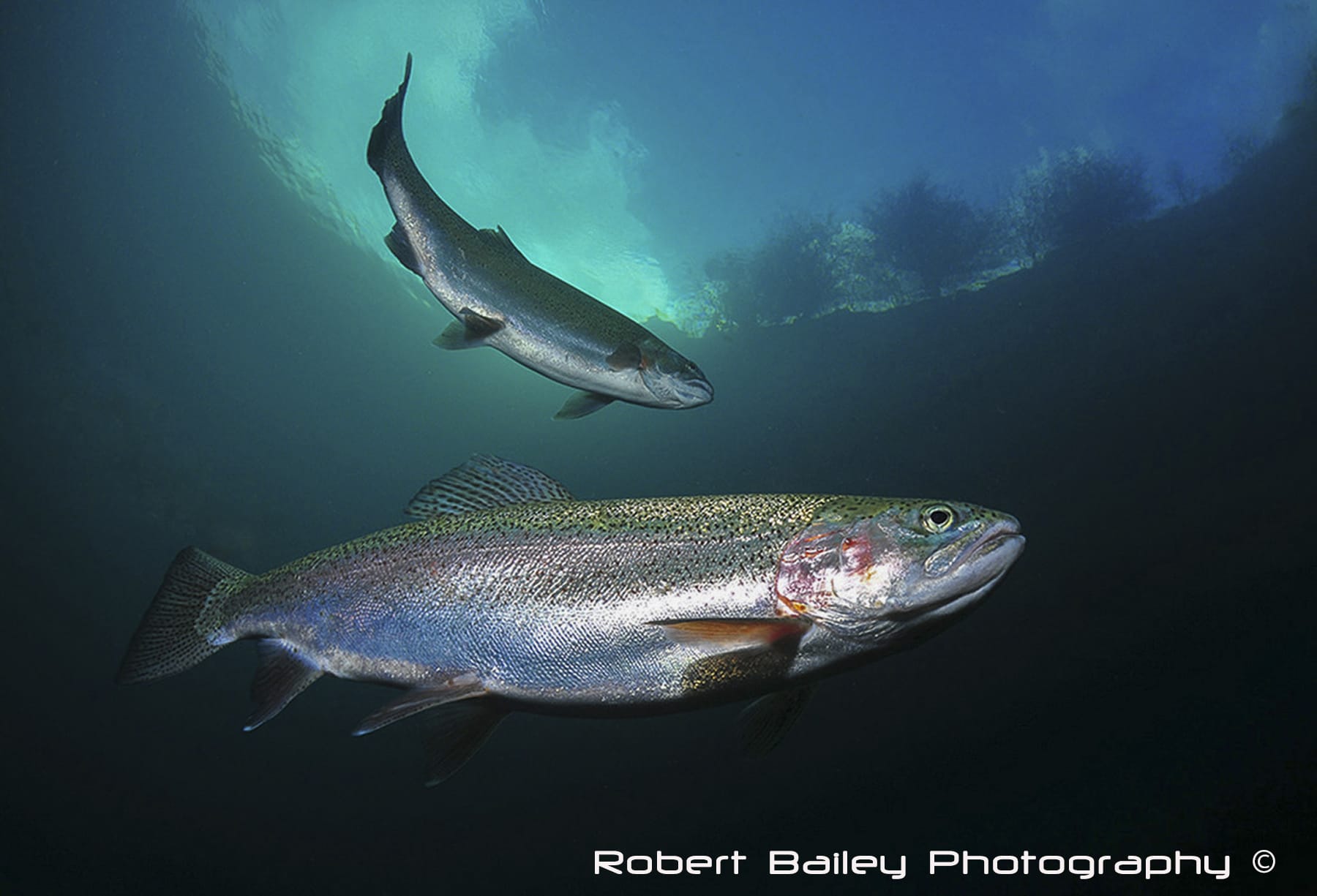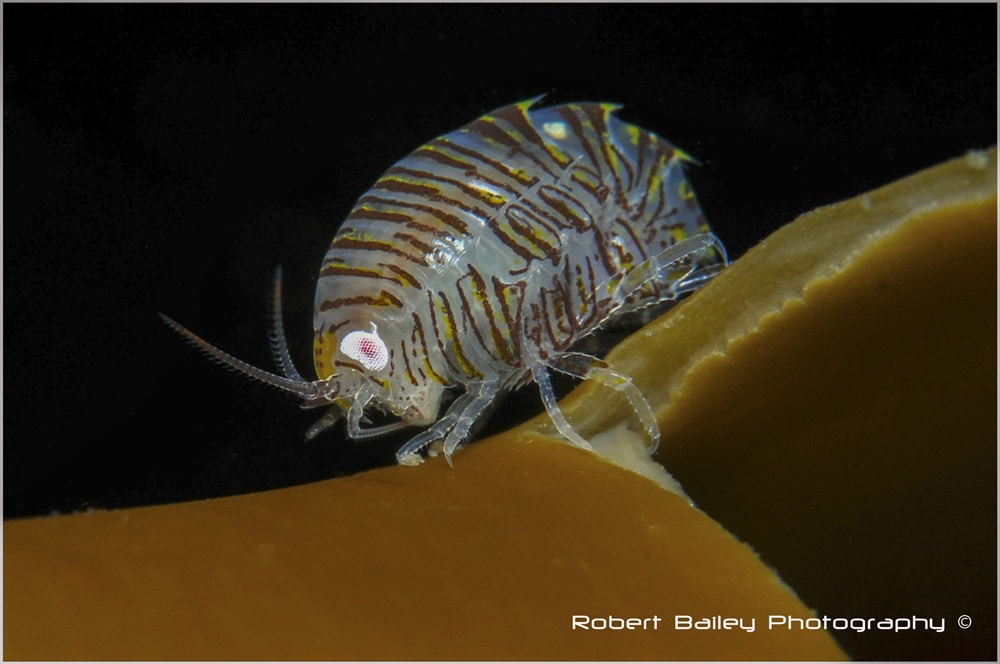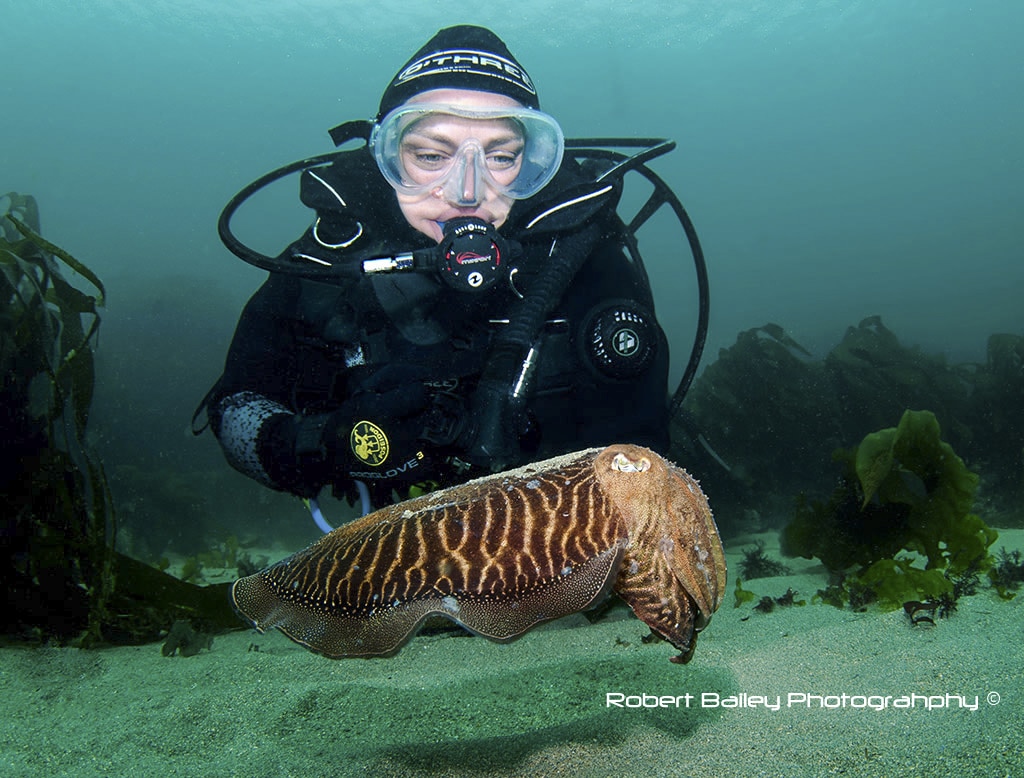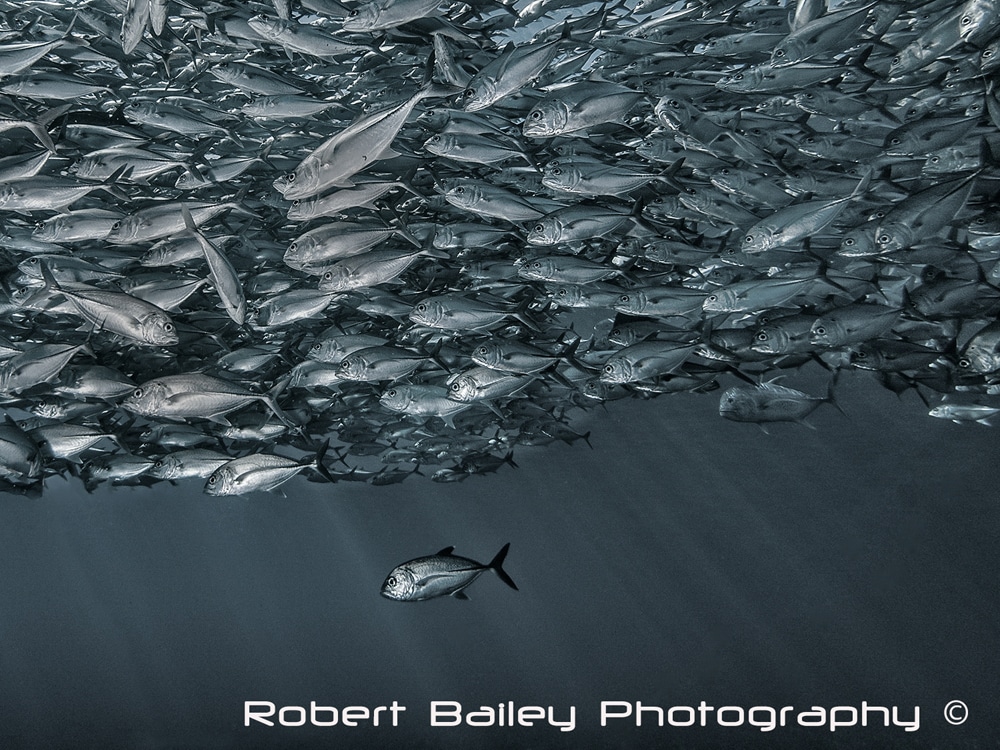Photo / Video News & Reviews
Scubaverse Underwater Photographer Interview: Robert Bailey
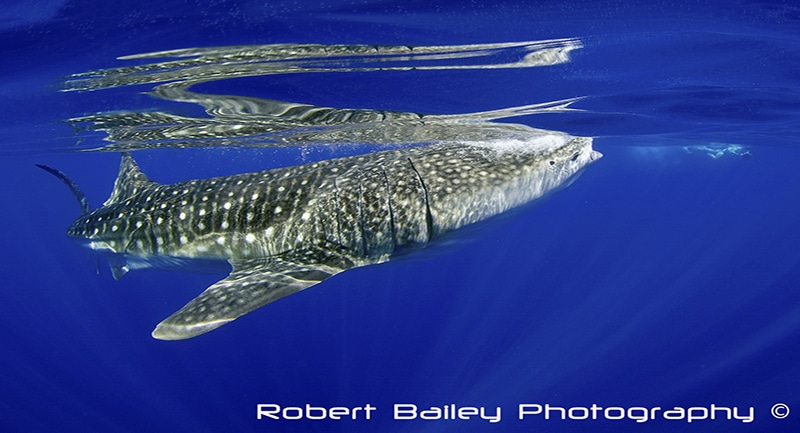
In an ongoing series, Scubaverse’s Underwater Photography Editor Nick Robertson-Brown talks to underwater photographers from around the world that he admires. In this blog: Robert Bailey.
 I grew up in the era of Jacque Cousteau. Those documentaries were ground breaking, they were adventurous, and they were unlocking the mysteries of the sea. Those explorations still fuel my inspiration today. In Costa Rica, in the late 80s, I hired a mask and snorkel, floundered into the sea, and didn’t come out for 3 hours. I was completely hooked. That feeling is still with me nearly 30 years on. I got certified as a diver after that trip, and decided I wanted to teach. I trained to become an instructor in the US. I worked at the University of Calgary for 6 years training up to instructor level, staffed three full-time Instructor Training Courses over the years, and taught both dive rescue and Ice diving as specialities.
I grew up in the era of Jacque Cousteau. Those documentaries were ground breaking, they were adventurous, and they were unlocking the mysteries of the sea. Those explorations still fuel my inspiration today. In Costa Rica, in the late 80s, I hired a mask and snorkel, floundered into the sea, and didn’t come out for 3 hours. I was completely hooked. That feeling is still with me nearly 30 years on. I got certified as a diver after that trip, and decided I wanted to teach. I trained to become an instructor in the US. I worked at the University of Calgary for 6 years training up to instructor level, staffed three full-time Instructor Training Courses over the years, and taught both dive rescue and Ice diving as specialities.
Being a dual citizen made the move from Canada to Europe in the late 90s an easy one, and after six years in the Netherlands I moved to the UK and have been based in the Midlands since 2005. I joined BSOUP at that time, and BUPG a little later. Entering competitions and being surrounded by accomplished photographers established the benchmark for what makes a winning image. As a result of competing my images have been published in the London Times, Sunday Times Magazine, Outdoor Photographer, Dive, Scuba, and other publications. Winning sponsorship to compete for the UK in the Epson Red Sea competition in 2009, and placing in that prestigious event was a great achievement for me. I’ve accumulated a lot of other awards in UK club competitions and other events over the years. Although I’ve travelled frequently to warmer climes, I’m drawn to colder environments. I spend the majority of my time these days diving in the UK, and Canada as these locations are less photographed and less crowded than other areas. My website is www.RobertBaileyPhotography.com , established in 2007.
NRB: How did your underwater photography start?
RB: I’ve been interested in photography since an early age. Already being a topside shooter, using a camera underwater was a natural progression for me. My underwater photography started in the early 90’s as a way of augmenting scuba training materials for the program at the University of Calgary. After a while I found my interest in UW photography overtook my desire to teach. No longer content being a diver with a camera, I evolved into an underwater photographer obsessed with getting better pictures.
NRB: What is your favourite u/w camera equipment (past & present) & why?
RB: Like most photographers I love kit. As Martin Edge once said, ‘It’s sexy’. In the film days I started out with a Nikonos V with a 35 mm lens, which is all I could afford at the time. I had varied results using that setup, but was bitten by the bug, and kept working at it every chance I got. Eventually I saved up enough to buy a 15mm lens, which was unparalleled for quality at the time. This was great to use, and I was able to make pictures I couldn’t have previously, especially close focus wide angle. After a few years I realized the limitations of working with a range finder camera underwater and set my sights on getting a housed system. I owned an Nikon F4 at time, so worked to get that into a housing with a Sport Finder (a lovely- and not cheap – optical view finder) I was able to get pictures more easily, especially of quick moving tiny fish, which proved a great challenge for me using the Nikonos.
My favourite camera out of them all is the one I use now, the Nikon D500. it’s nice to be able to take advantage of the latest digital technology. The autofocus system, in my experience, is better than anything I’ve used previously underwater. Having immediate feedback underwater is much easier than working with film. My work horse wide angle lens is the Tokina 10-17 mm fisheye, which is renowned for its close focus ability. I still use an old style Nikkor 60mm Macro lens which has excellent optics. I’ve used various brands of strobes over the years, but settled on Inon strobes which I’ve found to be hugely reliable, and easy to use. My Z240s are my go-to lights, and I use two S2000’s for off camera work. The Nauticam Super Macro Convertor (SMC) is a fantastic tool for unlocking the tiny marine life world not immediately apparent to the naked eye. When I dive with this, I feel like a kid looking at the underworld world through a microscope. I like kit that’s reliable, and built to last.
NRB: What would be your advice to anyone new to underwater photography?
RB: Revisit the fundamentals. Ensure your dive equipment is in order. Confirm you’re correctly weighted for conditions. Achieving neutral buoyancy in my opinion is key to good photography underwater, and more importantly preserving the underwater environment, and conditions for other photographers who may be around you. You’d be surprised how often this is overlooked. Get in the water as much as you can, and always dive with a camera. Creating opportunities underwater is more important than the equipment you don’t have. Fully exploit the equipment you do have. Join an underwater photography club, submit images to competitions, and solicit as much feedback as possible about what you can do to improve. There’s a lot of talent around these days, many photographers are generous with their knowledge and love to wax lyrical about their experiences. Join trips with other underwater photographers. These trips are often setup by clubs to maximize photographic opportunities. Read and research. There are a lot of good books around, and I highly recommend the latest books from Alex Mustard and Martin Edge. Read these cover to cover. The internet also contains a wealth of knowledge. Table top experimentation can be massively helpful in familiarizing you with your equipment. When your diving, set your equipment up on the surface for what your trying to achieve. Minimize adjustments underwater where possible. Having a plan and being deliberate has helped me over the years.
NRB: What, or who, has been your single biggest inspiration for your underwater photography?
RB: I think when I first got into it, I was hugely inspired by the work of David Doubilet. His underwater stories in National Geographic were only available though the post, so those articles were like gold when they arrived. Doubilet’s book Water Light Time is still a favourite of mine, and now a well worn tome. In more recent years Alex Mustard, Flip Nicklin, and Thomas Peschak are a few of the underwater photographers I really admire. There’s so much talent out there these days. Starting to place and win competitions certainly has fuelled my passion in the past, and trying to stay in the top set of local photographers keeps me coming back today.
NRB: What image are you most proud of and why?
RB: Without hesitation a picture I made of a whale shark whilst on a live aboard in Egypt. Quite early one morning in the Gulf of Suez on mirror calm seas the skipper killed the engine. From our cabin I could hear a lot of chatter on deck, and went up to see what was going on. To my amazement four whale sharks were going about their business. We jumped in the rib and did some snorkelling with these gentle giants. Amidst the excitement I got the cox to take me back to the boat, and I did the fastest lens change in history and jumped back in equipped with a wide angle lens. I managed to make a few pictures complete with surface reflections. Having only seen Basking Sharks in the UK for the first time the week before, I quite excited by the whole affair. I still look at these pictures and remind myself I was there.
NRB: Where is your favourite dive location, and is it for the photography?
RB: It’s hard to settle on just one place. I’ve been fortunate to travel a lot during my diving career. The diving and topside experience off northern Vancouver Island in Canada has been remarkable over the years, and tops my list. The marine life there is prolific and many of the subjects are less photographed than those in the tropics. Being surrounded underwater by dozens of Pacific white sided dolphins ranks high on my list of underwater experiences. There are no crowds to speak of, the topside wildlife is abundant. Over the last few years we’ve run trips where we’ve seen coastal wolves, California sea otters, bald eagles, coastal deer, black bears, humpback whales, and orcas to name a few. I think Queen Charlotte Strait and Slingsby Channel would rival any topside safari. It’s home for me, and a lot of my formative experiences as a diver and photographer took place there.
NRB: What are you views on marine life manipulation, moving subjects?
RB: I do my utmost to respect the creatures I photograph, and not interfere with any marine life. I leave subjects alone that are inaccessible with a camera. I think humanity needs to be more courteous to the other inhabitants we share our planet with. Jeopardizing life for the sake of a photograph is not acceptable practice to me.
NRB: What do you look for when you are making your images?
RB: Clean, uncluttered backgrounds. Colour. High Contrast. Anthropomorphism
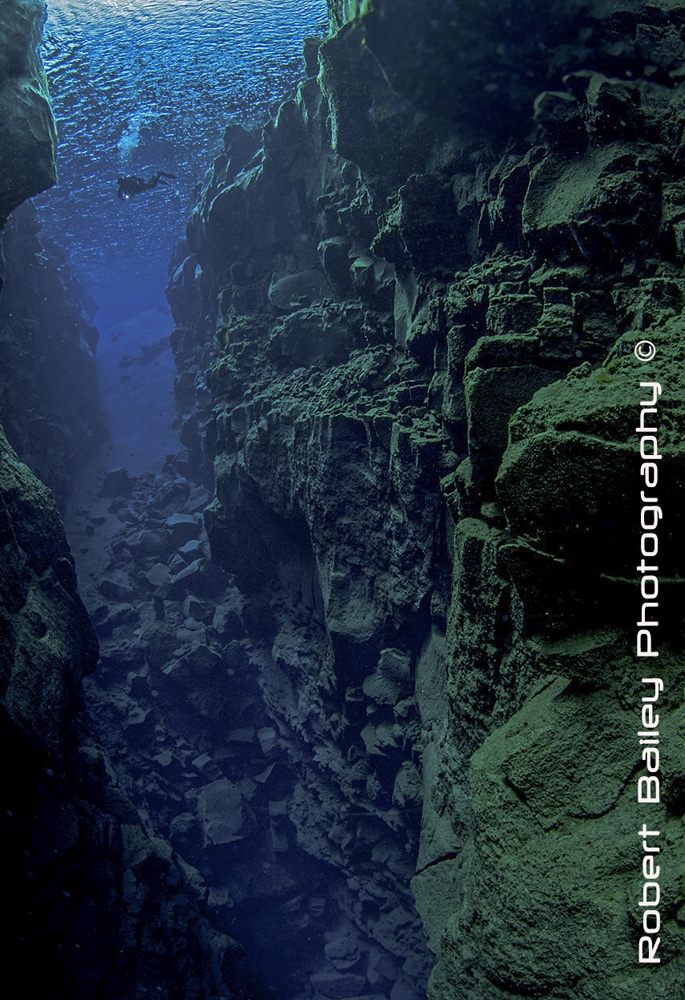 NRB: What motivates you to take u/w photos?
NRB: What motivates you to take u/w photos?
RB: My love of nature, photography, diving, being outdoors, and the great friends and family I’ve shared my experiences with.
NRB: If you could photograph any one thing/place what or where would that be?
RB: A blue whale is my ultimate dream. and I’d like to photograph it in a remote area, maybe in a polar region. Having said that I’d settle on being in the water anywhere, with any whale. I’ve seen a lot whales on the surface, and have been close enough to Orcas to smell their breath. I’m in awe of whales, and would love the experience of being close to them underwater.
Find out more about Robert Bailey by clicking here.
Blogs
Jeff Goodman Launches Underwater Moviemaker Course with NovoScuba

Transform Your Dive Experiences into Cinematic Masterpieces
NovoScuba has partnered with acclaimed underwater filmmaker Jeff Goodman to introduce the Underwater Moviemaker Course—a revolutionary program designed to equip divers with the skills to capture the breathtaking beauty of the underwater world.
Whether you’re an aspiring filmmaker, an avid diver, or a photography enthusiast, this course offers the tools and expertise needed to create stunning underwater videos. From vibrant coral reefs to curious marine life, you’ll learn how to film, edit, and produce captivating underwater stories, all with expert guidance from a seasoned professional.
Jeff Goodman: A Legacy in Underwater Filmmaking
Jeff Goodman brings over 40 years of experience in underwater film production for television to this course. Reflecting on his career, Jeff said:
“Although technology has dramatically changed, the basics of underwater filming remain constant. This course covers crucial skills for producing great videos. Whether you’re creating professional broadcast films or high-quality hobby videos, the fundamental principles are the same.
A camera operator must master their equipment to capture those magical underwater moments effortlessly. But beyond technical know-how, underwater filmmaking is about having fun and enhancing your diving experiences. So, take your time, learn at your own pace, and enjoy this creative journey.”
About NovoScuba
Founded in 2023, NovoScuba is reshaping dive education with a comprehensive, digitally native platform. Offering cutting-edge training programs for divers at all levels, NovoScuba sets a new benchmark in the diving industry by combining innovation with accessibility.
With ISO-certified courses, a student subscription model, and multilingual support, NovoScuba ensures that dive education is inclusive and engaging. More than just a training provider, NovoScuba fosters a global community of divers committed to exploration, collaboration, and sustainability.
Join the NovoScuba Underwater Moviemaker Course Today!
Dive into the world of underwater filmmaking and start creating cinematic stories that inspire. Learn more about the course and enroll today at www.novoscuba.com/novoscuba-underwater-moviemaker-course.
EXCLUSIVE: Jeff Goodman interviews Mark Spiers, CEO of New Scuba Diving Training Agency NovoScuba
NovoScuba’s Game-Changing Approach for Dive Store Owners: WE PAY YOU!
The diving world thrives on passion and adventure, but for many dive store owners, the financial and operational challenges can be as deep as the ocean.
NovoScuba, an emerging force in the diving world, is on a mission to transform this landscape for the better. With a revolutionary approach to dive store and training agency partnerships, NovoScuba is setting new standards for how dive stores can thrive while keeping their focus on delivering exceptional diving experiences.

A New Paradigm: NovoScuba’s Bold Mission
NovoScuba’s mission is straightforward yet profound: to disrupt the traditional dynamics between dive store owners and training agencies. Traditionally, dive stores have been subjected to substantial fees charged by training agencies, for membership, materials and certifications. These costs have often placed a heavy financial burden on store owners, cutting into their profits and limiting their ability to offer competitive prices to customers.
NovoScuba flips the script by offering a model where dive stores earn money, instead of paying high fees. Dive stores receive commissions for every student they register, and their certification costs are covered. This new model not only boosts profitability but also ensures clients get top-quality training at unbeatable prices.
Financial Upsides: Earn From Student Registration
NovoScuba’s approach is simple yet revolutionary. Dive stores partnering with NovoScuba can earn commissions for every student they enroll.
Here’s how it works: For every student enrolled through NovoScuba, dive stores receive a commission. Each student enrolled will receive their e-learning materials and certification credit included in their subscription. This arrangement is a significant departure from the traditional model, where dive stores often struggle to manage high overhead costs related to training fees and certification expenses.

NovoScuba’s approach ensures that dive stores can focus on what they do best—providing top-notch diving experiences—without being bogged down by excessive financial burdens, and the need to carry large stocks of materials.
Quality Training at a Great Price
NovoScuba stands out by offering high-quality, ISO certified, training that doesn’t break the bank, in fact our students will pay less than with most competing agencies. Clients benefit from top-notch education and safety standards at competitive prices. Dive store owners can confidently promote NovoScuba’s programs, knowing they’re offering fantastic training at affordable rates. This balance of quality and affordability helps dive stores build a strong reputation and attract more customers.
Your Brand is Your Business: NovoScuba’s Commitment to Showcasing Your Identity
At NovoScuba, we understand that your brand is your most valuable asset, and we’re committed to putting it front and centre. Unlike agencies that charge high fees to promote their own brand, we believe in investing in yours. With NovoScuba, you won’t be paying to advertise someone else’s logo alone, — our focus is on showcasing your unique identity. Certifications prominently feature your brand, as well as the training agency, reinforcing your store’s image and brand every step of the way. We’re here to support and elevate your brand, ensuring that your investment directly benefits your business.
Affordable Membership: An Investment in Your Success
NovoScuba’s membership model is designed with dive store owners in mind. Membership fees are kept low and include annual Pro member fees for your team. Payment can be made monthly or annually in your local currency, avoiding the hassle of exchange rate fluctuations. NovoScuba promises no exchange rate changes without a six-month notice, ensuring financial stability and simplifying budgeting. With a membership lasting 12 months from date of joining, you’ll enjoy a full year of NovoScuba’s benefits and support.

Streamlined Operations: Simplifying Your Workload
Handling administrative tasks can be a challenge, but NovoScuba makes it easier. We’ve streamlined certification procedures and reduced paperwork to help dive stores operate more efficiently. Certification processing is quick and straightforward, allowing more focus on teaching and customer service. Our system minimises bureaucracy by storing necessary forms in student profiles, reducing paperwork and administrative delays.
Crossover Made Easy
For dive stores looking to transition to NovoScuba’s model, the crossover process is designed to be smooth and hassle-free. NovoScuba provides support to ensure that the transition is as seamless as possible, helping dive store owners integrate into the new system with minimal disruption. Experienced dive Pros don’t need to undergo extensive retraining. Our crossover is designed to familiarise Pros with NovoScuba’s user-friendly platform, standards and course structures, and not to waste time and expense re-training in water.
With just a few simple steps, you’ll be ready to offer top-notch training through NovoScuba.
Comprehensive Business Support and Training Included in Your Membership
NovoScuba goes beyond financial benefits by offering experienced support and training. This value added service includes:
- Business Training: Optimise your operations with guidance on marketing, customer service, and best practices.
- Marketing and Promotion: Access resources to attract new customers and boost your store’s visibility. Enjoy cross promotions with NovoScuba to gain increased exposure.
- Ongoing Support: NovoScuba’s commitment to its partners extends beyond initial training and setup. The company offers ongoing support to address any issues or questions that arise. This continuous support ensures that dive store owners have a reliable resource to turn to whenever they need assistance.

Embracing Digital Natives: Instant Evolution and Continuous Improvement
NovoScuba’s digital-native approach is a game-changer. Leveraging cutting-edge technology, we ensure our services evolve and improve swiftly. Dive stores benefit from instant updates, the latest features, enhancements, and effective solutions, keeping them ahead of the curve. This continuous improvement helps dive stores stay competitive and deliver exceptional services. Whether it’s a new course update, additional marketing resources, or improved e-learning functions, NovoScuba’s digital infrastructure ensures that dive stores are always equipped with the most current and effective solutions. This continuous evolution not only helps dive stores stay ahead in a competitive market but also ensures they consistently provide top-quality services to their clients.
Why Is NovoScuba Doing This? – Fair Profit Sharing for Greater Access and Growth
At NovoScuba, we’ve taken a bold step by paying commissions to stores rather than following the traditional model of training agencies charging high fees. Our mission is to make diving accessible to everyone and to foster a growing community of new divers and continued education. By redistributing profits more equitably between stores and training agencies, we aim to create a more supportive and collaborative environment within the industry. We believe this approach not only helps individual stores thrive but also stimulates overall growth and innovation in diving. Our commitment to fair profit sharing reflects our dedication to the long-term health and expansion of the diving community.

Everyone is getting a piece of the pie.
Getting Started: Join the NovoScuba Revolution
Ready to revolutionise your dive store experience? NovoScuba is here to support your journey toward reduced costs, increased profitability, and enhanced operational efficiency. Get in touch with our team to learn how NovoScuba can transform your business.
For more information, email info@novoscuba.com or visit www.novoscuba.academy.
Blogs
The Benefits of Underwater Photography Workshops

Are you just getting started out in underwater photography or are you a seasoned shooter who wants to take their images to the next level? Whatever you experience or ability, here’s an overview of underwater photography workshops.
What is an Underwater Photography Workshop?
The first thing to note is that this is not ‘school’! There are no compulsory classes and at workshops you are free to pick and choose what you take part in, or otherwise.
A huge part of learning and developing your skills is through experimentation, trial and error, responding to feedback, and honing your technique. Underwater photography workshops provide you with the perfect platform for practice and improvement.
There is no better alternative to hands on experience in an environment that is 100% dedicated to your development. Reading informative articles and watching videos on YouTube can never replace the value of one on one time with your camera rig, underwater!
Underwater photography workshops are generally structured around core components, namely: presentations, underwater practice, feedback and critique sessions, troubleshooting/one-on-one sessions, and technical support.
Other components of a workshop include dining, relaxing, and time for socializing too!

What Topics do Underwater Photography Workshops Cover?
Depending on the pro, the type of workshop and regional diving highlights, a wide range of topics may be covered from composition and lighting through to shooting techniques and editing.
Benefits of an Underwater Photography Workshop
- Improve Your underwater photography
- Learn from professionals
- Learn from other participants
- Expand your photography knowledge and understanding
- Try put new techniques
- Learn how to maximize your camera rig
- Phenomenal travel opportunities
- Memorable experience and new friendships

Underwater Photography Workshops in the Lembeh Strait, Indonesia
When it comes to underwater photography workshops that focus on shooting macro, muck diving, and unusual marine species, there can be no better destination on the planet than the Lembeh Strait.
The Critter Capital of the World, a Muck Diving Mecca, and the Twilight Zone are just a few of the names that have been given to this stretch of water over the years due to its high density, and diversity, of rare and unusual marine life.
Some of Lembeh’s most iconic species include the hairy frogfish, Pontohi pygmy seahorse, the Lembeh sea dragon, Mandarin fish, Bobbit worms, Rhinopias scorpionfish, flamboyant cuttlefish, tiger and harlequin shrimps, ornate ghost pipefish, harlequin crabs, and where do we start with octopus? Here’s just a few… wunderpus, mimic, blue ring, hairy, long arm, starry night, and coconut… and the list goes on!
Dive conditions in the Lembeh Strait can be extremely favourable for underwater photographers. There is little to no current making both moving around and remaining stationary a breeze. The comfortably warm water temperatures reduce the cold that can also set in when not on the move.
Lembeh Resort and Underwater Photography Workshops
Lembeh Resort not only offers luxury accommodation in the Lembeh Strait but it is also offers a complete suite of facilities for underwater photographers and enthusiasts. Here is a ‘snapshot’ of the camera and imaging services that are on offer at Lembeh Resort – inside and outside of underwater photography workshops:
Photography Facilities
Lembeh Resort offers a suite of facilities for underwater photographers, including:
- The only Backscatter Authorized Photo Center in Asia
- Photo Center offering camera, housing, lights and accessory rentals and purchases, onsite repairs, onsite 3D printing of small components, professional support and assistance, full workshop support
- Full time onsite Photo Pro
- Full time onsite Marine Biologists
- Marine biology and underwater photography trained Dive Guides
- Spacious camera room with individual work spaces, lights, and power points
- Varied diving options including single dives in the Lembeh Strait, two or three tank dive trips, day trips to Bangka, east coast Lembeh trips, blackwater, bonfire, night, and Mandarin fish dives.

Capturing Critters in Lembeh Underwater Photography Workshop 2025
The renowned Capturing Critters in Lembeh Underwater Photography Workshop is back in January 2025 for the 12th year running!! This unique workshop is hosted by not one but three worldclass photo professionals. The 2025 workshop features: Ron Watkins (USA), Paul Duxfield (UK), and Renee Capozzola (USA). The week-long workshop promises to be packed with incredible diving, Pro presentations, and one-on-one instruction and feedback.
2025 Workshop Schedule and Dates:
- Pre-Workshop: January 8th ––10th (time to relax and unwind after traveling and enjoy some of Lembeh’s famous dive sites.)
- Workshop: January 11th – 17th (Capturing Critters in Lembeh 12th Annual Workshop)
- Workshop Extension: January 18th – 19th (Additional Day Workshop Extension)
- Post-Workshop: January 20th – 21st (Stay additional nights and enjoy extra diving days or some time to relax and explore more of North Sulawesi)
Find Out More:
Meet the pros and find out more about the Capturing Critters in Lembeh 2025 underwater photography workshop, including prices and workshop inclusions, here:
If you are ready to book your place on the January 2025 Capturing Critters in Lembeh Underwater Photography Workshop – contact Lembeh Resort at: reservations@LembehResort.com.
-

 News2 months ago
News2 months agoIconic SS United States to become the World’s Largest Artificial Reef
-

 News3 months ago
News3 months agoBook Review – 52 Assignments: Underwater Photography
-

 Gear News3 months ago
Gear News3 months agoDYNAMICNORD – New German diving brand enters the British market
-

 News3 months ago
News3 months agoExploring Cenote El Pit: A Diver’s Dream
-

 Gear News3 months ago
Gear News3 months agoTry BARE drysuits (and maybe even win one!) this Friday with Sea & Sea at North West Dive Fest
-

 Marine Life & Conservation3 months ago
Marine Life & Conservation3 months agoBook Review: Coral Triangle Cameos
-

 Blogs2 months ago
Blogs2 months agoDive the Egyptian Red Sea this Autumn with Regaldive
-

 News3 months ago
News3 months ago2024 Ocean Art Underwater Photo Competition Announced


